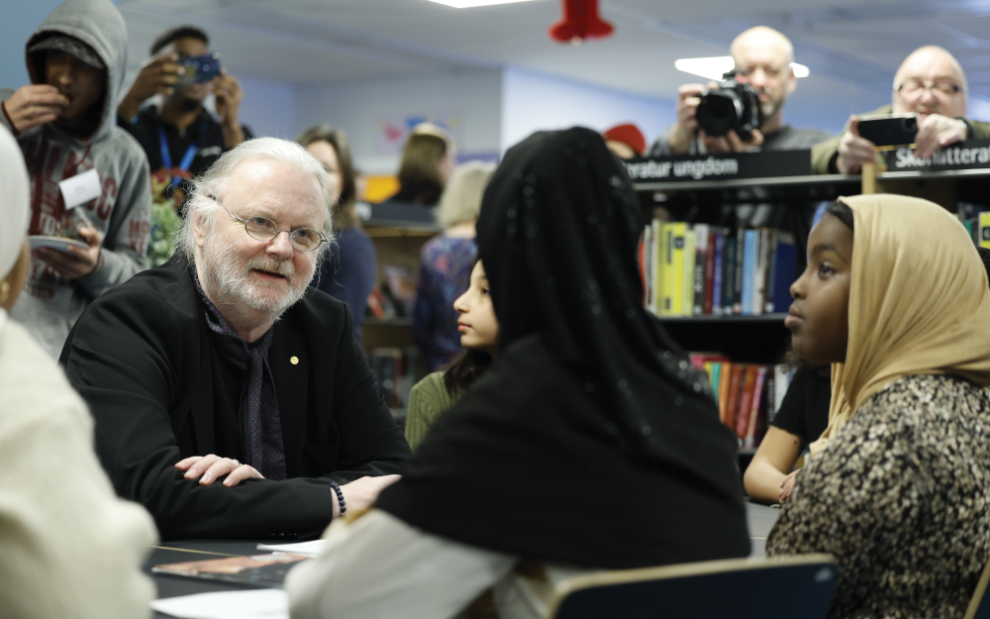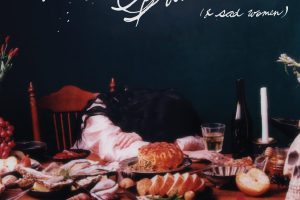There’s probably no more “post-Christian” place on Earth than contemporary Scandinavia. According to the Pew Foundation, only 7 percent of Norwegians say they attend weekly religious services. In Sweden, it’s only 6 percent. Yet somehow, late last year, in the depths of their long, dark winter, the Swedish Academy saw fit to award the Nobel Prize for Literature to Jon Fosse, a Norwegian playwright, novelist, and poet who, 12 years ago, became a Roman Catholic and since then has unabashedly placed Catholic belief and practice front and center in his work.
We’re not just talking about a Catholic writer who conjures superficially secular parables of sin and redemption like Flannery O’Connor or one of those lapsed Catholic artists like Cormac McCarthy, whose tragic vision of life is rooted in the doctrine of original sin. No, with Fosse, we’re talking about a Catholic writer who, in his stream-of-consciousness masterwork, Septology (Giramondo Publishing), regularly inserts digressions about infant baptism, the Eucharist, and the mystical theology of Meister Eckhart, along with whole paragraphs of Latin prayers.
The narrator of Septology, Asle, is a childless and widowed painter who lives and paints in a tiny village in western Norway. The only people he sees are a fisherman neighbor and the agent who sells his art. From our perch inside his head, we hear his thoughts on the “invisible light” he seeks in his paintings, his conversations with his late wife, and his traditional Catholic prayer life. He prays several times a day, usually the rosary, often in Latin. At one point, his recitation of the Apostle’s Creed at the start of the rosary sends him off on seven full pages pondering the cosmic significance of the incarnation, the transfigured body of Christ, and the eventual resurrection of the dead. Like Fosse, Asle’s conversion to Catholicism corresponded with his turn away from alcoholism, and he credits prayer as the key to his sobriety.
Septology covers seven days in the life of its narrator, ending on Christmas Eve. The bulk of the novel has Asle going through his rather uneventful daily life, but his childhood, adolescence, and young adulthood also unfold before us through his memories. Meanwhile, each day of Septology begins with Asle staring at the painting that is currently on his easel, a brown and purple x he eventually titles “St. Andrew’s Cross.” Each day ends with him falling asleep saying the rosary “inside himself.”
Like most Americans, I’d never heard of Jon Fosse until he won the Nobel Prize, but shortly after that news, I started reading Septology and quickly disappeared into its world. The novel is written as one 667-page-long sentence without a single period. This sounds gimmicky, but in practice it serves to propel the reader forward. There’s just no place to stop until you reach that last Ave Maria. Reading Septology, for me, became both an aesthetic joy and a devotional exercise.
When I finished the novel, I had to wonder: What does it say about the power of great art and about the goodness, truth, and beauty of Catholic faith that Fosse’s work could rise to the very top of a very post- and even anti-Christian world?
One possible answer lies in Fosse’s very particular—or even peculiar—rendering of a Catholic religious sensibility. Secular readers may respond more to the texture of Fosse’s prose and the idiosyncrasy of his narrator than to any of the Catholic elements. In addition, neither Fosse nor his narrator are given to proclamations, much less condemnations. Even in the passages where Asle waxes doctrinal, his tone is not dogmatic but ruminative. He examines his faith the way someone might examine a Rubik’s Cube, wondering exactly how the thing works. Still, I can’t help speculating whether Fosse’s Nobel Prize is a sign that 21st-century Western culture has a place for Catholic Christianity.
Those musings led me, belatedly, to the young woman frequently acclaimed as the novelist of this historical moment in the West—Irish writer Sally Rooney. I picked up her latest book, Beautiful World Where Are You (Farrar, Straus, and Giroux), which I’d heard included a three-dimensional and fairly sympathetic depiction of a believing and practicing Irish Catholic Millennial.
Those rumors are true. However, as anyone who’s read the book knows, the Catholic character, Simon, is only the tip of the iceberg. Much of the novel unfolds in email exchanges between Alice, a novelist with many similarities to the author, and her old college roommate, Eileen. Alice reads the New Testament regularly and confesses to a love for Jesus while remaining determinedly agnostic about his divinity. Eileen, meanwhile, goes to Mass with Simon and is happily startled to find an island of sincerity and transcendence hidden in the middle of post-Catholic Dublin. By the end of the book, when Alice is asked directly if she believes in God, she is willing to say that “there is something underneath everything”; her acknowledgment seems only a short step away from St. Thomas Aquinas’ definition of God as Being Itself.
The Dublin church Eileen visits has a tiny congregation comprised mostly of elderly women. The church where Fosse’s Asle goes to Mass sometimes has only six or seven communicants. Despite this, they are seen as offering credible answers for the emptiness and isolation of post-Christian life. Maybe, after all, their true strength is in their weakness. In any case, Fosse and, in her more indirect way, Rooney offer evidence that the truths of Christianity and the sacraments of the church have their own power, regardless of the frailty of the vessel that carries them.
This article also appears in the May 2024 issue of U.S. Catholic (Vol. 89, No. 5, pages 36-37). Click here to subscribe to the magazine.
Image: Christine Olsson/ZUMAPRESS/Newscom















Add comment